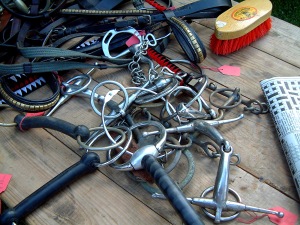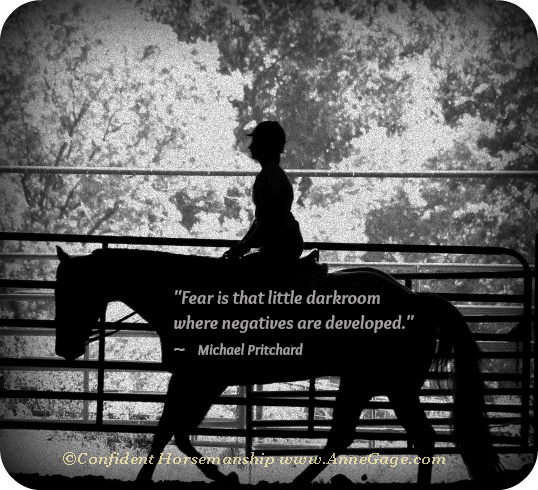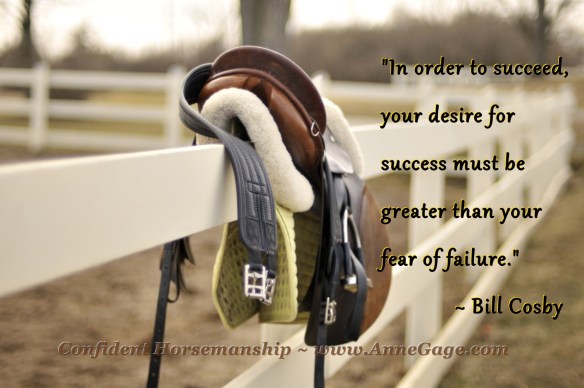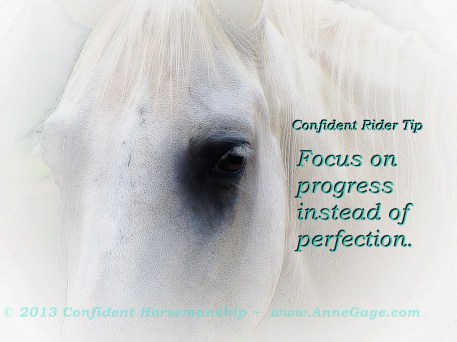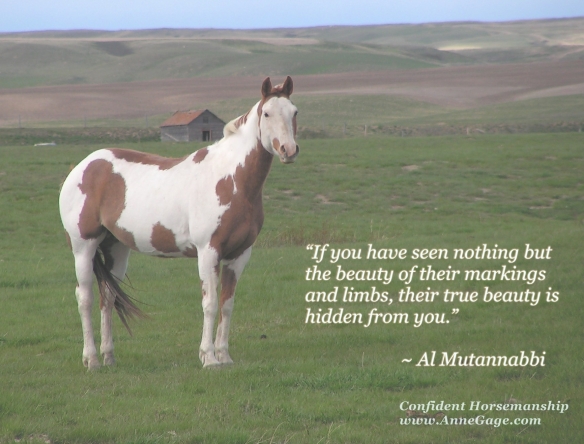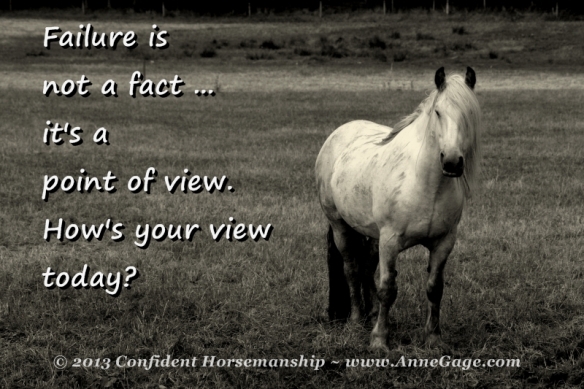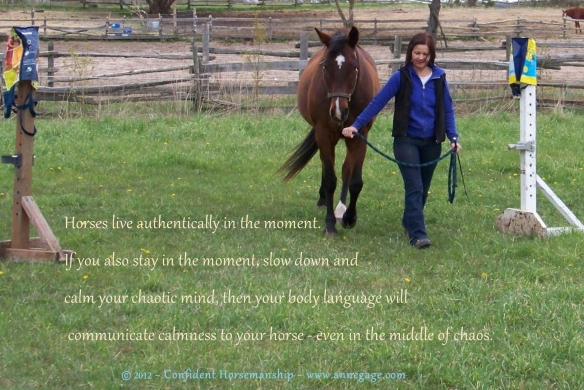Question from a reader:
“Do you find that you can be working with your horse for a while, then ask the same thing of him as you’ve already done nicely, and all of a sudden he’s not paying attention anymore? And if you try to get his attention he ‘panics’ or spooks suddenly from the least little thing?”
People are often caught off-guard by the spook, bolt or buck that seems to come out of no where. Some people think it’s just the horse’s way of evading doing something he doesn’t want to do or that he’s trying to ‘get them’. While it may be true that horses will try to avoid doing things we ask of them (and, honestly, why shouldn’t they avoid work any less than we do?), it’s not true that they plot and plan ways to get us humans.
Here’s the thing about horses. As prey animals they want to conserve energy as much as possible so that they have lots available when they need to run away from a predator. So, a part from the exuberant play that youngsters sometimes indulge in, horses are pretty lazy (to put a label on it). But, hey – I can relate. I don’t like to expend any more energy than is absolutely necessary. That’s why I’m always looking for short cuts to getting chores done around the farm. One friend says I’m very creative. I call it laziness.
But back to the spooking, bolting, bucking horse issue. So, why does an animal that likes to conserve his energy expend all that excess energy to avoid doing something he doesn’t want to do or just to ‘get the human’? The answer is – he doesn’t.
There is always a reason for the horse’s behaviour. Here are 3 possible reasons for that unexplained spook.
- Horses see, hear, smell and feel things of which we -mere humans with our different level of senses – are unaware. Just because you didn’t see or hear anything that you believe would have startled you horse, doesn’t mean that he didn’t see, hear or even smell something.
- Horses learn from repetition and it only takes 3 repetitions for them to see a pattern. So, it’s really easy to inadvertently teach a horse to be nervous at a certain spot in the arena or on the trail or when asked to perform a particular transition or movement. And that pattern can be created just as easily for you as it can be for your horse. So, if your horse has spooked or reacted badly when you ride by a certain area or ask for a transition or movement, your anticipation of a repeat performance can cause you to be tense and nervous which affects how your horse feels physically and mentally. Vicious cycle created.
- How you sit on your horse affects how he feels. Whether you’re in a western, english or treeless saddle or riding bareback, you affect (for better or for worse) your horse’s balance, alignment and level of relaxation. Have you noticed how difficult it is to remain relaxed, supple and balanced when your horse is crooked, off balance and tense? That works both ways. So if you’re off balance, crooked or out of alignment in any way the less relaxed your horse will be and the more reactive he will be to stresses (even little ones) in the environment. And, you are more likely to give unclear and even conflicting messages to your horse.
Rider misalignment has a huge impact on horses behaviour causing them to exhibit unwanted behaviours or resistance. You may be familiar with the rider vertical alignment (ear over shoulder over hip over heel) and the horse ‘nose/poll to tail’ alignment. But are you aware of your alignment to your horse?
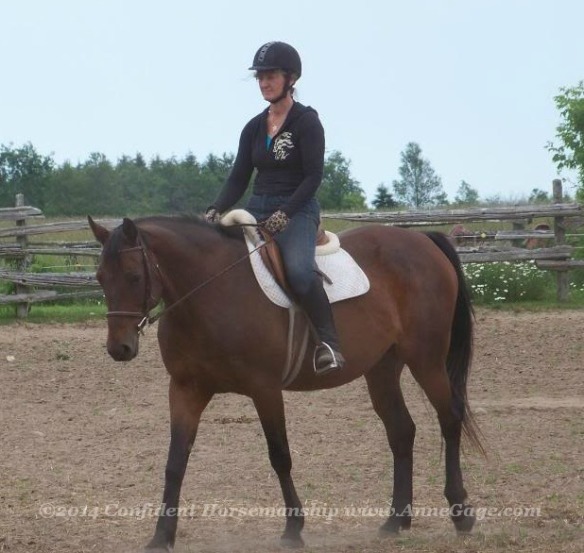
Horse and Rider Alignment – My horse is aligned poll to tail (her hind legs track up with her front legs); I am square (hips and shoulders); and we are aligned with each other.
You are sitting on your horse’s spine. So, if you not aligned with his body and his bend, he will feel at least uncomfortable and at worst pain. You are aligned with your horse when your belly button aims between his ears; your shoulders mirror his shoulders; and, your hips mirror his hips. If your horse has a bend to the left (even a slight one), you mirror that bend when you keep your belly button aimed between his ears and your hips and shoulders square. If your outside shoulder comes forward, his outside shoulder will mirror that and bulge out of the bend. You’ll both be off balance and you’ll likely be hanging on to the inside rein trying to ‘correct’ him. And suddenly – out of no where – is that spook or resistance to doing that transition ….
The first step you can take to helping your horse feel less stressed and therefore less reactive to things in the environment is to improve your alignment. It will also keep you better balanced and able to deal with any sudden movements that come ‘from no where’.
Your Turn: Was this post helpful? Share it with a friend who can benefit from it as well then leave me a comment below and tell me what you are struggling with.
The Bottom Line – The absolute best way to develop a true partnership with your horse is by building your confidence and trust in each other.
You can get your Free Instant Access to my report “The 3 Most Important Skills You Need to Develop Confidence With Horses” when you visit www.AnneGage.com
Interested in organizing a Confident Horsemanship Clinic at your location? Click here for more information.
You’re welcome to use this article in your newsletter or blog as long as you notify me and include my credit information: ~ Written by Anne Gage, Confident Horsemanship www.annegage.com.
Anne Gage ~ Confident Horsemanship –Putting you and your horse in good hands.
www.annegage.com
www.facebook.com/ConfidentHorsemanshp
Facebook Group – Horseback Riding Solutions with Anne Gage
www.twitter.com/AnneGage

